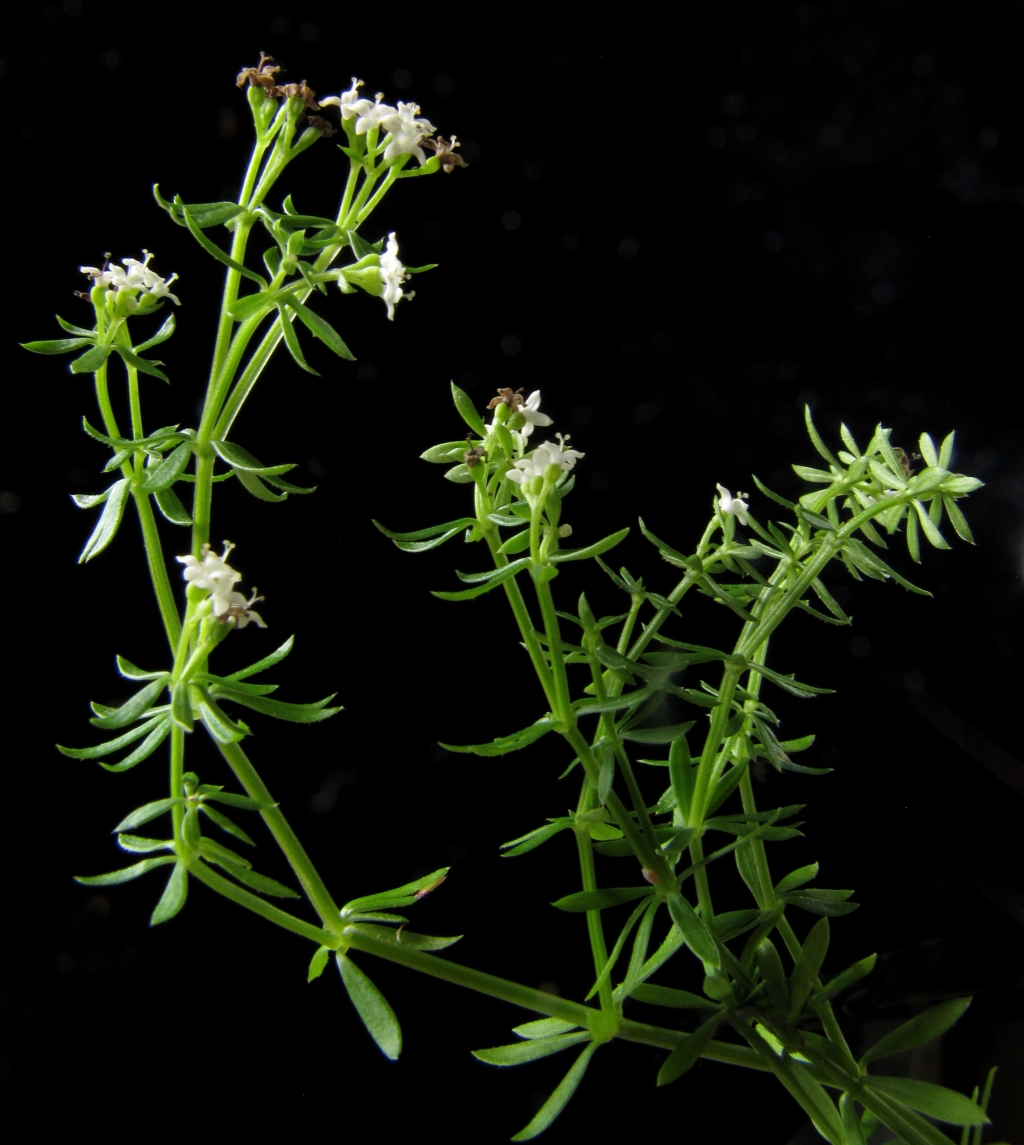Asperula
Annual or perennial herbs; stems 4-angled. Leaves and stipules usually more or less equal, in whorls of (2–)4–8. Inflorescences usually upper-axillary or terminal cymes or clusters, sometimes reduced to a single flower. Flowers usually unisexual and plants dioecious; calyx usually absent; corolla funnel-shaped, 4-lobed, deciduous, white, yellowish, pink or bluish (not in Victoria); corolla-tube usually longer than lobes; stamens 4, with filaments scarcely fused to corolla-tube, anthers exserted, lacking appendages; ovary inferior, 2-celled, ovules 1 per cell, style 2-lobed, stigmas capitate. Fruit usually somewhat fleshy, 2-lobed, indehiscent.
About 200 species, mainly Europe and Asia; 17 species in Australia, 16 species native, 1 introduced.
The generic description above is based on the Australasian species, thought by some authorities to belong to a separate genus. European and Asian species are distinct in having bisexual flowers in panicles or capitula and dry fruit.
A specimen of Asperula arvensis L. (Blue Woodruff) was collected in a garden at Ballarat in 1916, but there are no further records of this species in Victoria and it appears not to have become naturalised anywhere in Australia (Thompson 2009). This slender erect Mediterranean annual to 40 cm high has whorls mostly of 6–9 linear leaves and bright blue flowers in small terminal heads subtended by an involucre of long-ciliate bracts.
Jeanes, J.A. (1999). Rubiaceae. In: Walsh, N.G.; Entwisle, T.J., Flora of Victoria Vol. 4, Cornaceae to Asteraceae, pp. 616–642. Inkata Press, Melbourne.
 Spinning
SpinningThompson, I.R. (2009). A revision of Asperula and Galium (Rubieae: Rubiaceae) in Australia. Muelleria 27(1): 36–116.


